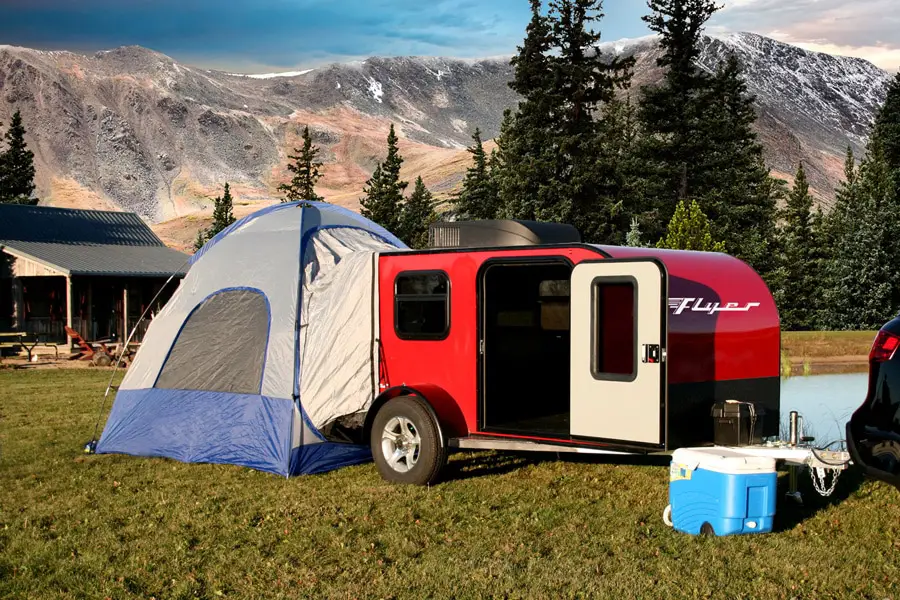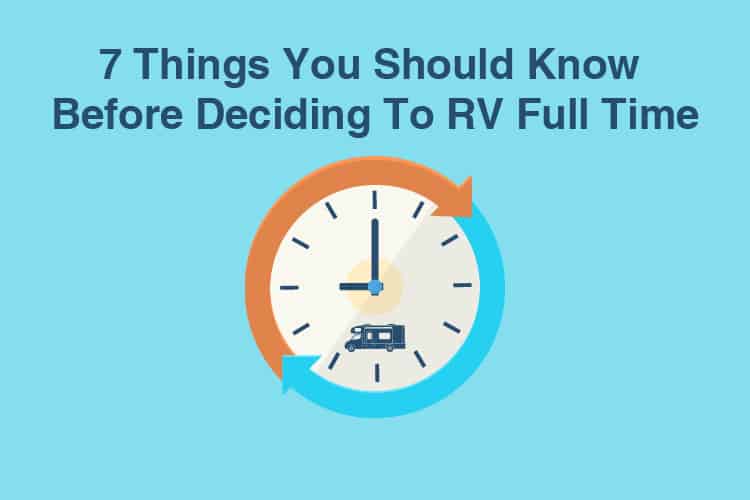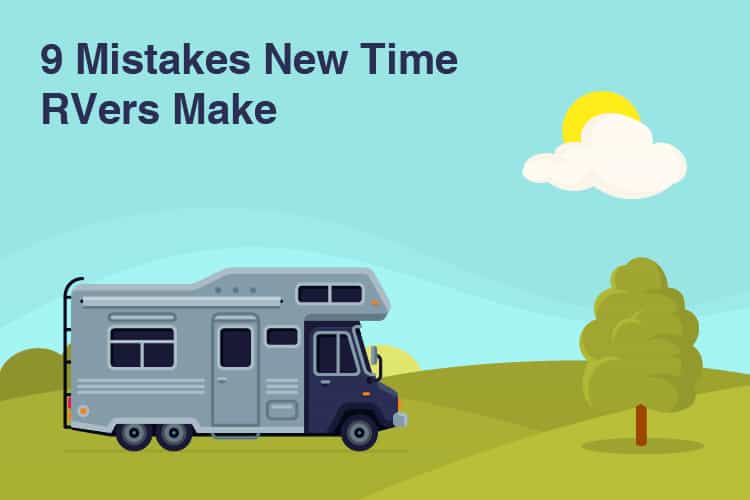If you’re dreaming about the open roads and the freedom to travel anywhere your heart desires, a travel trailer is for you. One of my absolute favorite things about these campers is that you always have your car with you.
For instance, if you want to go exploring places where your camper can’t follow— you can easily just leave it at the camp.
Don’t think it’s only the large Class A RVs that have room for luxury. Travel trailers can be just as extravagant—some will have large beds, slideouts, and even carpets.
If you’re new to travel trailer camping, don’t worry, we’re here to guide you. We will share everything you should know as a beginner who’s heading out on their first trip.
Preparing For Your Trip—What To Pack And How To Plan
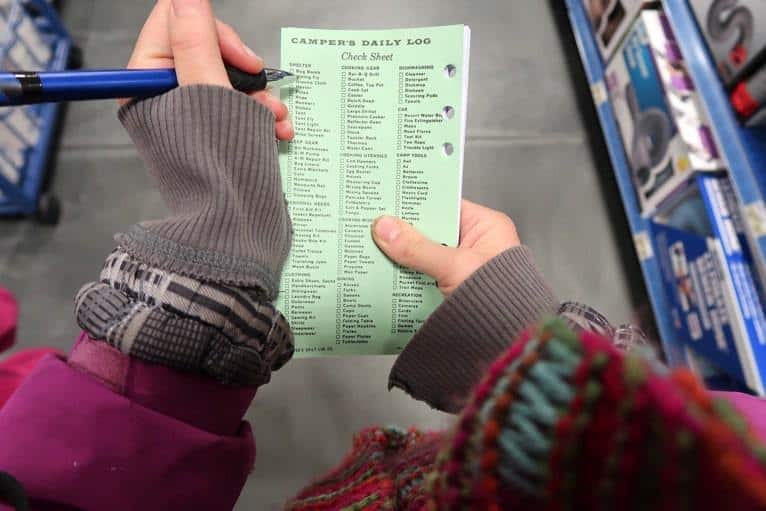
First and foremost, when you’re planning your trip, remember to write down a list of everything you’ll need. Don’t leave anything off the list thinking that it’s an obvious item—or you might just forget it.
I like to make separate lists. For example:
- Bathroom essentials: Toilet paper, towels, shampoo, toothpaste, etc.
- Bedroom essentials: Extra sheets, warm blankets, extra pillows, etc.
- Kitchen essentials: Pots, pans, durable dinnerware, utensils, etc.
- Entertainment: CDs, DVDs, board games, video games, etc.
I find that it’s much easier to remember everything when it’s not all listed in one place.
However, choosing your clothing can be tricky when going camping in a trailer. You don’t have a washer or dryer, so you may end up turning those undies inside out, depending on the length of your trip.
Although, some campsites have washers and dryers available, so make use of that when you can.
Before going on your first trip, you may be thinking that you can just grab the essentials from home. But, let me tell you that if you plan on going camping often, this will become quite a hassle.
First of all, you have to constantly worry about your pans getting scratched or your porcelain cracking. You also have to pack and unpack over and over again.
I highly recommend going out and buying everything you need for your camper. I know it makes the whole camping idea more expensive, but trust me, it will pay off. You actually don’t have to get that many things.
For the kitchen, all you need is enough plates for your family, the same with utensils. You probably won’t be cooking Michelin meals, so a few pots and pans will do just fine.
Staying Organized
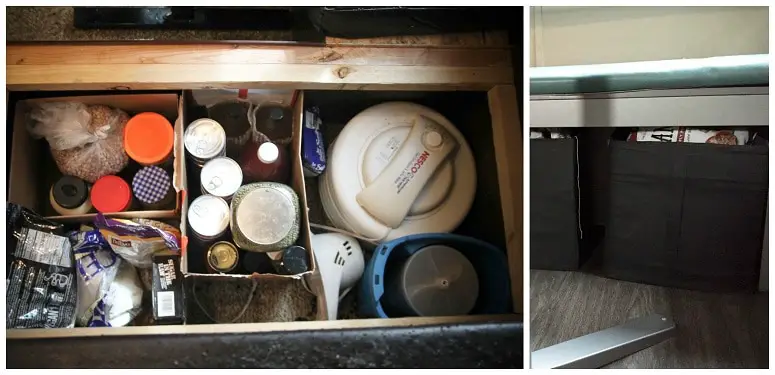
Even if your trailer is on the larger side, space might still be compromised. The absolute worst thing when camping is an overfilled camper. Everywhere you look you see stuff that doesn’t have a place, and this can quickly become a headache.
Before buying things for your camper, look at the cabinets and storage compartments. Try to imagine what you can fit and how to store it best.
Then, two or three days prior to your trip, park your camper outside in the driveway. Use the days to slowly pack everything, you could even use stickers and a label maker to mark the cabinets.
During these days, you’ll have time to store things and move them again if the spot isn’t right. Before heading off, make sure everything has a secure place. Don’t leave things out on the counters, if it doesn’t fit, it’s probably best to leave it at home.
Of course, it’s unsafe to keep loose things in the trailer while driving. Sudden braking or sharp turns could land things on the floor.
Make use of a few plastic containers. You can maybe mark them for a specific area, for instance, one could hold bedroom essentials, the other bathroom products. Having everything in containers will also make it easier to get in and out of the camper.
Meal Planning And Prepping
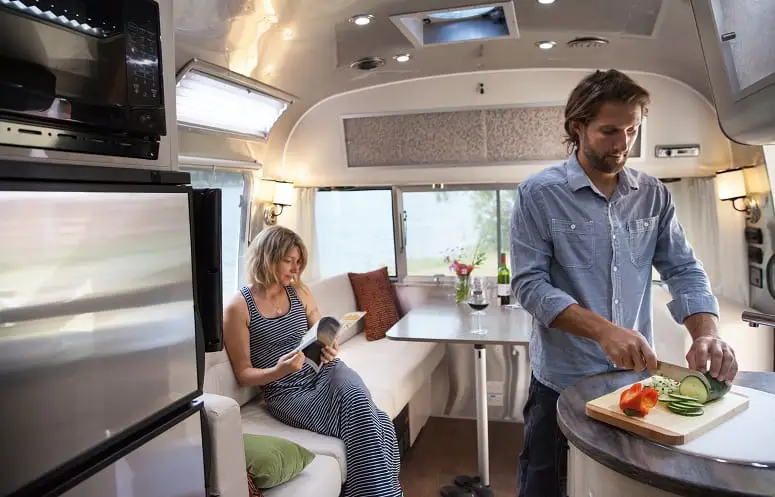
This is something that worries many—what should you cook? When you’re out camping in remote locations, it can be difficult to find the right supplies and ingredients.
Therefore, you have to plan ahead. To help you along I’ve made a short list of food items that I think are useful to have:
- Canned foods.
- Dry rice.
- Beans.
- Dry soups.
- Pasta.
- Oatmeal.
Basically, any non-perishable foods are a must-have. They may not sound that appetizing, but you can still put some delicious meals together with a bit of creativity.
You can also make your own flatbread using flour, oil, water, and salt. Cook it on the pan or a grill, or you can even roll it out on a (clean) flat surface and cook it over a fire.
The best thing about canned and dried foods is that you can leave it in your camper for next time. Then, as your trip is over, you won’t have to throw anything away, and all you have to bring inside are dirty clothes.
Where To Store Heavy Items
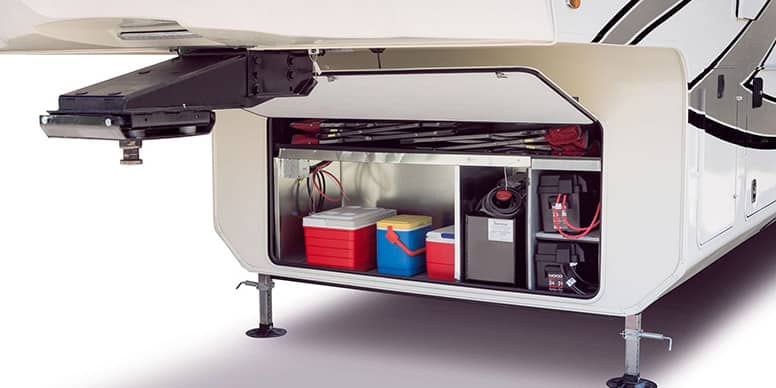
In a trailer, weight distribution is crucial. You can probably guess what happens if there’s too much weight in one end of a trailer. If the weight is off on one side (could be either side, front, or back), it can become impossible to tow.
You may notice the camper swaying down the highway—I’ll go into that more in a minute.
You’ll likely have a few heavy suitcases, as well as a generator. These items can put a lot of extra weight on the trailer, therefore, it’s important to store them correctly.
Heavy items should always be stored low, as close to the floor as possible. It’s also important to center the heavy items to prevent anything from throwing off the balance. Lighter items can easily be stored in the overhead compartments.
Preparing The Tanks
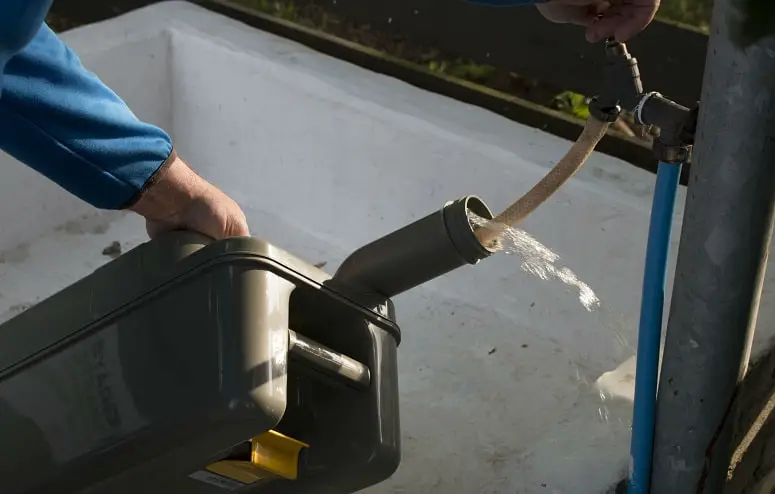
A travel trailer has three tanks: Black, gray, and fresh. The black tank will hold everything that goes down the toilet and the gray contains anything that goes down the drains.
The fresh tank is for clean water. Now, whether or not you can drink the water from the fresh tank depends on how well it’s cleaned.
It’s recommended that you clean out your fresh water tank at least every six months. It does take a while, but it’s quite an easy process. Here’s how:
- Pour a quarter cup of bleach per 15 gallons into the full tank. Let’s say your tank is a 30-gallon, you would then use half a cup of bleach.
- Let the full tank sit overnight.
- Drain, rinse, repeat. Rinse and drain your tank until the smell of bleach is gone. You may have to drive the camper back and forth a little to really get all corners.
Here’s a helpful how-to video on sanitizing your tank.
Use a hose from your house to fill up the fresh water tank before leaving for your trip. Depending on where you’re going, there might be dump stations that also offer fresh water fills. Just make sure it’s clean and safe.
I highly recommend bringing your own hose. Most campgrounds have hoses you can use, but you never know what the person before you used it for.
You could also install water filters in the kitchen faucet, and maybe even in the bathroom as well. Something like a Brita filter will remove potential pathogens and lead.
If you think it’s a bit much to install water filters to the faucet, you could get a filtered pitcher instead. Use it to fill up ice cube trays and drinking water.
When you’re heading out for your trip, your black and gray water tanks should be empty. Before taking off, remember to check that the valve for the black tank is closed.
Keeping it closed is crucial; if it’s open then it will drain everything that gets flushed down. It could also dry up, then solids and paper are likely to get stuck.
Driving With A Trailer
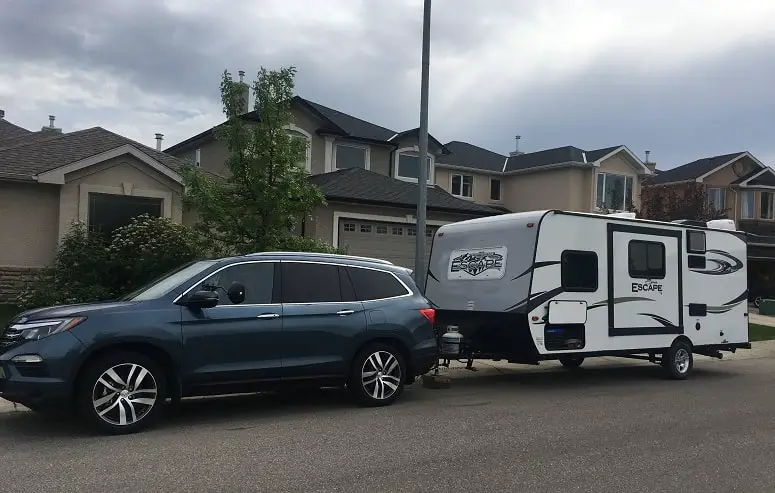
Driving with a trailer is not the easiest, many new campers choose buses or Class C models for this very reason. However, with a little bit of practice, patience, and some preparation, you should be good to go.
Being able to see what’s going on around the trailer while you’re driving is crucial. If your towing vehicle doesn’t have towing mirrors, you could purchase mirror extensions.
Figuring Out The Weights
When driving with a trailer, it’s vital that you check how much weight your car can tow. You should be able to find this information on a sticker located somewhere in the car. Usually, it’s by the driver’s door hinges, other cars have a sticker in the glovebox.
Next, you have to check the weight of your trailer. When looking at the information, you should notice a dry weight, GVWR, and tongue weight—allow me to explain:
- Dry weight: This is what your trailer weighs when it’s empty (no water in the tanks, no extras).
- GVWR: This is the gross vehicle weight rating. It’s the weight of the trailer plus all extras, like food, water, clothes, etc.
- Tongue weight: The downward force on the car hitch by the tongue of the trailer.
It’s important that none of these exceed the vehicle’s towing limits. One of the weights that you really have to watch is the tongue weight. If this is off, it could make driving quite difficult.
Too little tongue weight could cause the back end of your car to lift, which can cause the trailer to sway. If it starts to sway, it’s extremely difficult to control.
On the other hand, if the tongue weight is too heavy, it could cause the back end of the car to sink. If that happens, it will affect the handling, the driver’s visibility, and even the brakes.
Keeping heavy items at the center of the trailer is the best way to balance off the tongue weight.
Give Yourself A Little Room
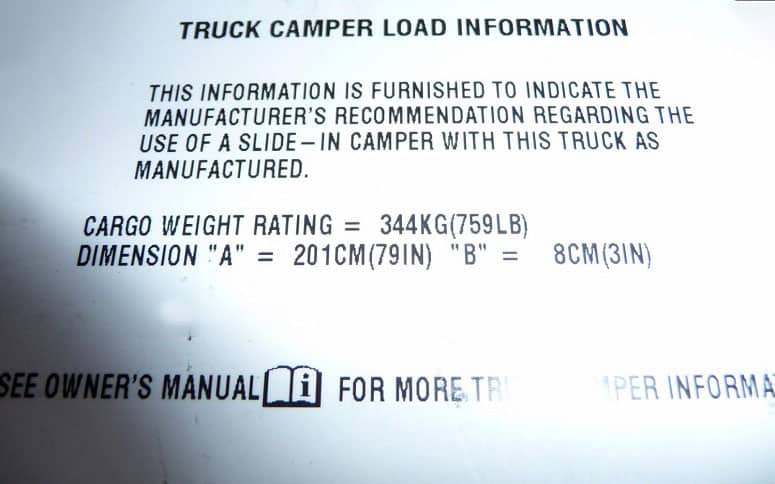
Car manufacturers can sometimes be a bit too generous when stating how much your car can actually tow.
To make sure you don’t go over, subtract 1,000 pounds from the total towing limit. Doing this, you can be sure to not damage the engine or the transmission.
Pre-Trip Checklist
I have listed a few things you should check before heading out with your trailer, these include:
- Trailer lights—make sure they are all working.
- Trailer brakes—test them for safety.
- Take care that all antennas and roof vents are down.
- Be sure that chocks on the wheels are removed.
- Check that your trailer is properly fitted with its license plate and current tags.
- Double check that the hitch latch is secure.
- Remember that all doors, windows, and vents on your trailer should be closed.
Take a quick walk around the trailer to make sure you’re all set for your trip.
Quick Tips On Driving With A Trailer
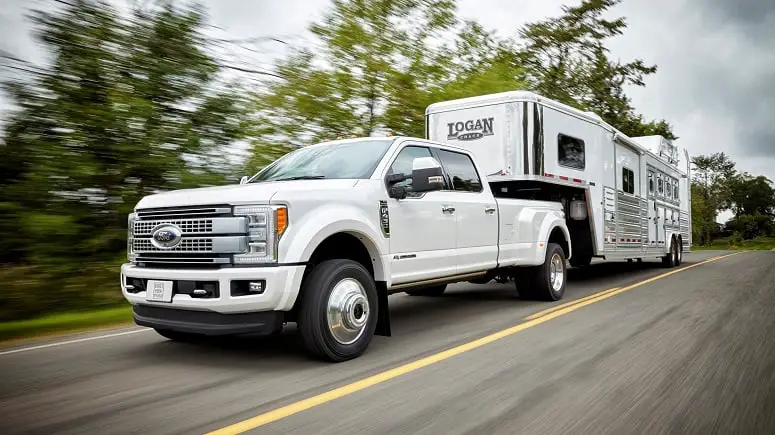
If you’re a pro and already know how to maneuver around the country, feel free to skip this section. If you’re a newbie and need a few tips before heading out, keep reading.
You will surely encounter tight roads with sharp turns. Taking corners too fast can land your trailer on the side. So, slow and steady is best when driving a camper.
You also have to remember that you’ve now got more than double the length behind you. Therefore, you need more space around the turns to avoid curbs, rocks, and other obstacles.
Another thing that intimidates newbies is backing up. You may be going in a perfectly straight line when all of a sudden you find yourself forming a V.
The number one thing to remember when backing up with a trailer is that the trailer goes the opposite direction of the car. Turn the steering wheel to the left, the trailer will go right and vice versa.
The next thing you should keep in mind is that the steering is very sensitive, especially when parking. You may not feel like the trailer is going in the right direction, but don’t begin to turn the wheel too much.
It jst needs a little extra time to adjust to the changes. Have patience, and make small turns at a time until you have successfully parked.
Check out this video on backing up properly.
If you’re going on your first trailer trip, I highly recommend you to practice around the neighborhood first. Get a good feel of the car with the trailer. Practice turns and reversing to be sure that once you go out in traffic, you’ll be ready and confident.
The number one thing to keep in mind is that acceleration and braking takes more time. Always drive a little below the limit, and I like to just stay in the right lane while going down the highway.
Keep at least double the distance than normal to the car in front of you, in case you need to brake suddenly.
Fishtailing—How To Avoid It
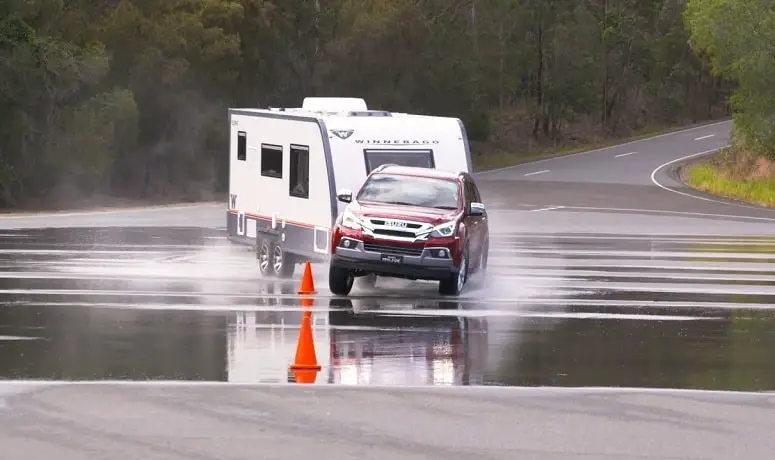
Fishtailing or trailer sway is a very common problem when driving with a trailer. It can be caused by strong gusts of winds or even when being overtaken by a large vehicle.
One common culprit is poor weight distribution. As we discussed above, getting the right tongue weight is vital and will help prevent trailer sway.
Apart from getting the weight distributed correctly, you should check the air pressure in the tires.
Another thing you can do is install an anti-sway bar. This uses the weight of the trailer to stabilize it by bracing the weight of the axle against the chassis. It can keep the trailer from going side to side in windy weather.
There are different types of anti-sway bars available, which one you choose will depend on your trailer.
If you have a light trailer and a strong car, you might not need an anti-sway bar at all. Many campers recommend going without a bar at first and seeing how it feels.
If you’re out driving and your trailer begins to sway, don’t panic. Remember that hitting the brakes or trying to steer it in the opposite direction will only make it worse.
The best thing you can do is to take your foot off of the gas and concentrate on steering straight.
Eventually, the car will slow down and the swaying should stop. Some trailers will have brakes which you can control from inside the car.
You might be able to stop the swaying by gently pressing the trailer brake. But, you have to do it very lightly.
Here is a great demonstration of safe trailering.
Setting Up At The Campsite
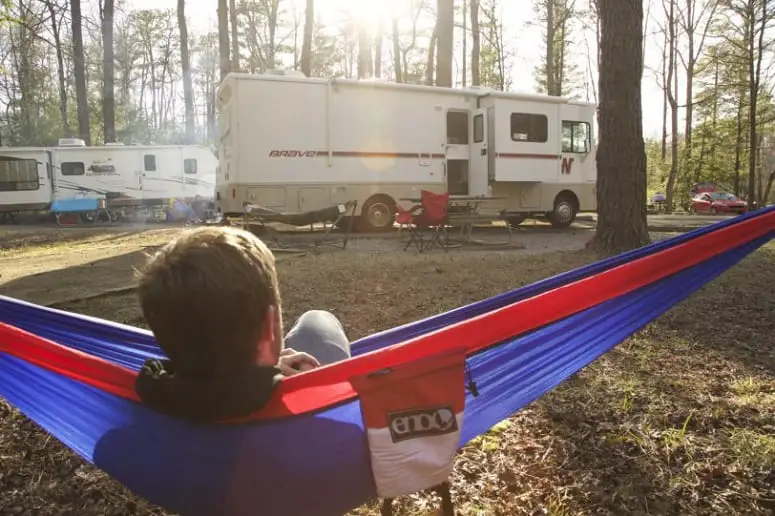
You made it to the campsite without too many bumps in the road. Next, you have to set up. Finding the perfect spot is not only important for the view, but it’s also essential for your trailer.
The one requirement for the perfect spot is that the ground is flat.
Parking on a slope or uneven ground can make it uncomfortable to live in the trailer. It can also prevent the fridge from working, maybe even damaging it.
If the ground is not level, you may need some leveling blocks. Blocks like these from Camco, have an interlocking design which keeps them in place.
Unhook Or Hooked Up?
Once you’re in the right spot you’ll have to decide whether to keep the trailer hooked to the car or not.
Personally, I always unhook it, since it makes the whole setup process easier. Once you unhook the trailer, all the stabilizers will hit the ground and you don’t have to match to the hitch.
You will also have the car free to take you anywhere you need to go.
The stabilizers will keep the trailer steady when you’re moving around inside. There are usually four stabilizers, however, larger trailers may have more.
Electric Hookup Tips
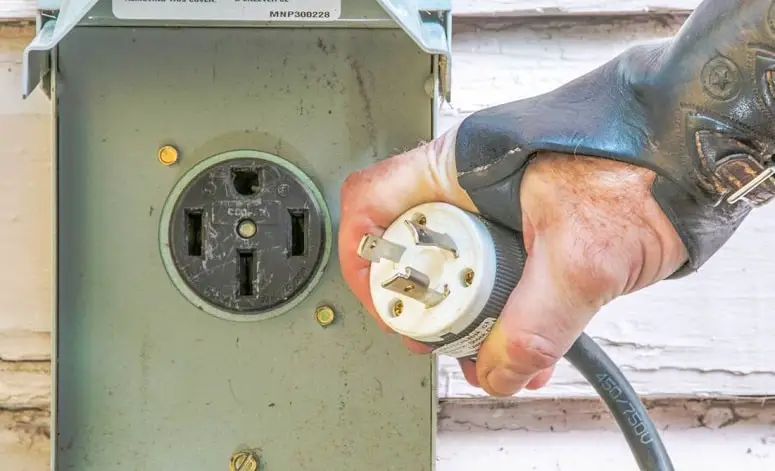
It’s important that you have the right electric adapter for the campsite you’re staying at. Most trailers have a 30-amp service, however, some will have 50 and others 15.
The tricky part is that all have a different connector, and you can’t hook up your trailer if the adapter doesn’t fit.
An RV surge protector might also come in handy. Campgrounds are notorious for having unstable power. This could damage your trailer’s electrical systems.
If you’re staying at an off-the-grid location, you’ll need a generator or solar panels to power your travel trailer.
All About The Cooling And Heating When Off-Grid
Depending on the location and weather, you may need to do some temperature controlling in your trailer. During hot summer days, you might feel inclined to turn on the air conditioner.
Before you do, here’s something you should know—the trailer battery or solar power will not power the air conditioner.
If you’re going camping during the summer and you know you’ll need air conditioning, you’ll need a generator. I recommend using a 3,000-watt generator, or you could get two smaller 1,500-watt generators instead.
The things that will work on the trailer’s batteries include:
- Powered jacks.
- Lights.
- Fans for the heater.
- The slide.
- Ceiling vents.
The refrigerator in your trailer should be able to run on either electricity or propane. Using propane might be the best option when on the road. Even if you’re hooked up to a generator, it will be using a lot of fuel, which will get expensive.
When And Where To Dump
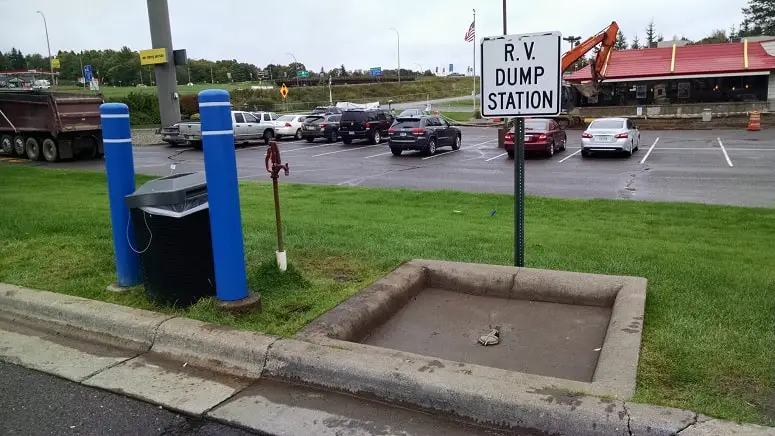
There will come a time when the black and gray tanks need to be emptied. A good rule of thumb is to empty the black tank when it’s two-thirds full. Although, some people like to do it when it’s half full.
Some campgrounds will have a dumping station, but if you’re staying at a park or other location, you will have to find one. You can do a quick Google search to find one nearby.
To empty the tanks you’ll need a dump hose: these usually don’t come with the trailer. I recommend getting a nice, long one. As you’re pulling up to the dump station, park ahead of the hole so the back is closest.
Connect the hose to the trailer and hole, then pull the large black lever to open the black tank. Once the black tank is empty, it’s time for the gray.
Always do black first—the “cleaner” gray water will then flush the hose, getting all the solids out. When you’re all done, rinse off your hose using the hose at the location.
Once you’re heading home after the vacation, you might still have a lot of water in the fresh tank. This can be dumped as you’re driving. Just slightly twist the valve and it will empty itself out slowly as you’re driving.
Finishing Off
That was it, your complete guide to camping with a travel trailer. Hopefully, you now feel more confident when heading out on your trip.
If you have any further questions or concerns ahead of your trip, leave me a comment below! Maybe you have tips for other newbies. We’d love to hear from you, either way!


